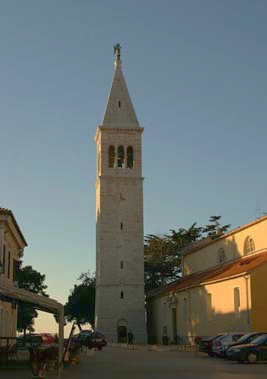About Novigrad
Emonija, Neapolis, Novigrad

Numerous monuments and archaeological sites demonstrate that the territory of the present-day city of Novigrad was already inhabited in antiquity. In written documents dating from the 17th century Novigrad is known as Neapolis and Civitas Nuova while in church documents it is known as Emona, Emonia, Aemonia. It was the seat of a bishopric - from the 5th-6th centuries to 1831 that of the suffragan bishop of the Aquilea-Grado archbishopric - and the bishop of Novigrad had juristiction over the territory streching to the river Dragonja to the north and to the river Mirna to the southeast. Due to its favourable situation on the small peninsula with its fertile hinterland, Novigrad was frequently involved in turbulent historic events. During the 8th and 9th centuries it was from Novigrad, as a seat of the frenkish prince Ivan, that the feudalisation of the area progressed, placing it in the context of the general cultural and historical changes taking place in Europe during the middle ages. During the 16th and 17th centuries, due to frequent wars and epidemic diseases, the city stagnated almost to the point of extinction.

The city of Novigrad adjusted to changing circumstances as the ruling authorities of the city changed, beginning with the Byzantine in 6th and 7th centuries, the Frankish in the 8th-9th centuries, German from 10th-12th centuries, Venetien from 1270-1797, Napoleonic from 1805-1813, Austro-Hungarian from 1814-1918 and Italian in 1918-1943. Each of these periods left its legacy - a rich cultural inheritance for Novigrad and its surroundings. This patrimony has not yet been fully explored and it represents a rich source of material for future research.









